#Planetary system
Explore tagged Tumblr posts
Text
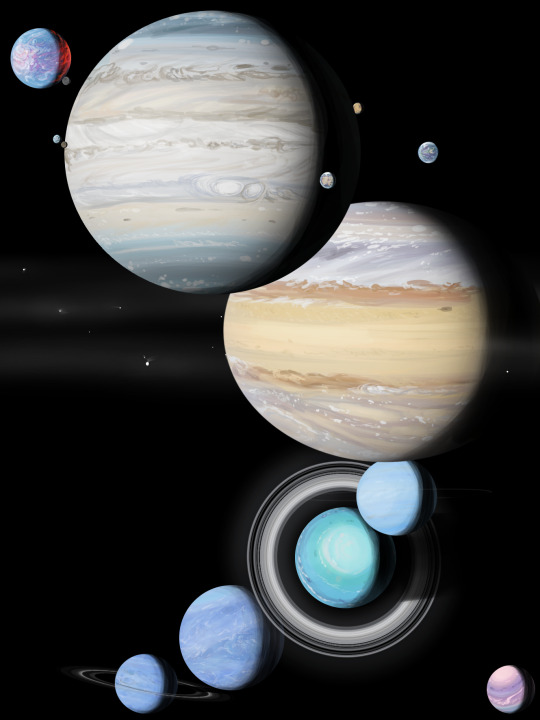
Family portrait of the Zwo-nmu planetary system (the system to which Gymnome--Eaurp Guz's homeworld and the setting of train puzzle dot exe (title pending)--belongs).
Labelled version and more below the cut.
The Zwo-nmu system, home to Guz's homeworld Gymnome, is like many planetary systems dominated by gas giants. In fact, the only object that would count as a planet in the IAU's books, which resembles the terrestrial planets in our solar system, is tiny mercury-like "Rabbit" in the gap between Cool Ember and Omen.
Omen swept into the inner system, disrupting the late stages of planetary formation, but capturing Oldsky and Rival as moons and Gymnome as a trojan (which later destabilized into a horseshoe orbit). Glerbuh, Omen's near twin by mass, sucked up most of the remaining gas disk, but there was still plenty of volatile mass to generate the four ice giant planets Glarpi, Shpler, Eauah, Flibul, and most likely the recently discovered Schmitt.
Despite no other gas giants posessing moons as massive as Omen's, each of the large satellites of the other gas giants are still worth considering. Not much is yet known of the moons of the ice giants, but it is known that Glerbuh's diffuse ring is generated by the eruptions from about a dozen small rounded moons, which as they trade eccentricities with one another go in and out of periods of dramatic cryovolcanic activity.

The original system layout drawing produced in early 2023.
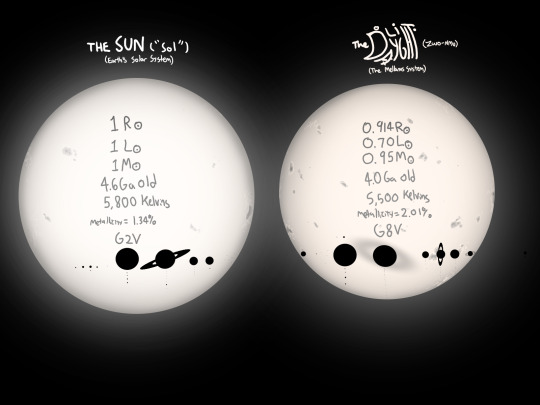
Scale comparison between our Sun and Zwo-Nmu, and their planets.

Up close on Omen's moons and Gymnome:
Close up of Glerbuh:
Fanart of Omen by Tolbachik:
#Zwo-nmu system#Mellanoid Slime Worldbuilding#Gymnome#Omen#Omen (planet)#solar system#star system#planetary system#planetary science#gas giant#gas giants#ice giant#ice giants#planet#planets#space#Super earth#sub neptune#exoplanets
36 notes
·
View notes
Text

Lalande 21185: The Nearest Planetary System? - October 19th, 1996.
"What's the closest extrasolar planetary system? It may well be planets of the dim red dwarf star cataloged as Lalande 21185 - a mere 8 light years distant. This star is too faint to be seen by the naked eye and its planets have not been imaged directly. Instead, their presence is inferred by a long series of telescopic observations, tracking the star as it wobbles in mutual gravitational response to the masses of its orbiting planets. Our own planetary system would be detectable by such a technique. Using the data obtained from frequent observations of this star from the last 50 years, at that time, University of Pitsburgh astronomer George Gatewood announced that much of Lalande 21185's wobble is likely due to an unseen planet with approximately 90% of the mass of Jupiter and an orbital period of 5.8 years. His work also indicated that a second and possibly third planet of similar mass could well be present in the system. Massive planets orbiting a red dwarf star would be very different from the Earth - as illustrated in this artist's vision of a Jupiter-sized planet with rings and moons lit by a cool, dim Sun. Nevertheless, the existence of a planetary system so near our own suggests the intriguing possibility that planets are common in our galaxy."
31 notes
·
View notes
Text

Star Wars: Episode II - Attack of the Clones (2002, George Lucas)
10/01/2025
#Star Wars Episode II Attack of the Clones#film#2002#george lucas#Jonathan Hales#star wars#ewan mcgregor#hayden christensen#natalie portman#ian mcdiarmid#samuel l. jackson#christopher lee#anthony daniels#kenny baker#frank oz#Star Wars Episode I The Phantom Menace#planetary system#Separatism#galactic republic#jedi#count dooku#civil war#obi wan kenobi#padmé amidala#Clone trooper#darth vader#clone wars#Disney Studios Australia#Digital cinematography#sequel
16 notes
·
View notes
Text





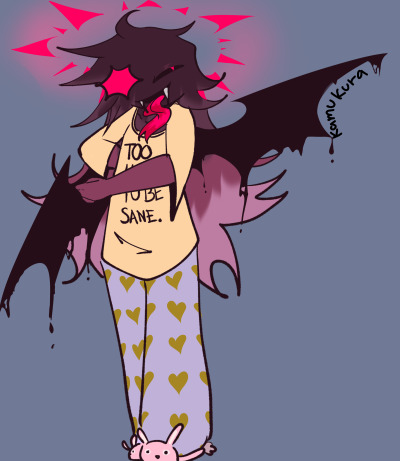
second batch (last two are the stars the planets orbit!)
(all art by my friend eclipse)
33 notes
·
View notes
Text
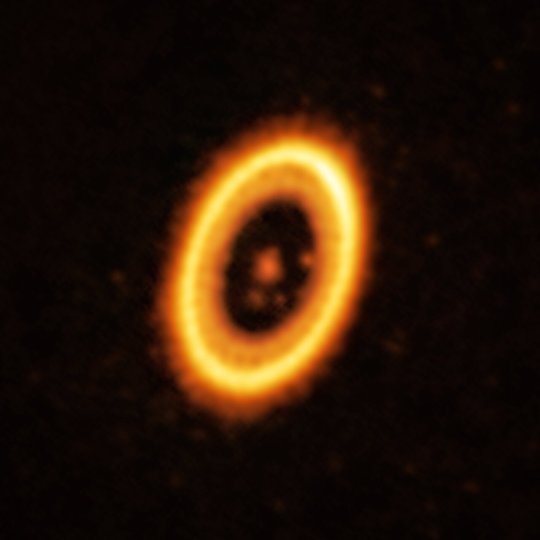
Planets in the Making
68 notes
·
View notes
Text

Comet 67P/Churyumov–Gerasimenko
Processing of OSIRIS spectroscopic cam images from ESA’s Rosetta spacecraft Full project -> jackiebranc.site/processing-o...
#photographers on tumblr#elloon#jackie branc photographer#rosetta#comet#Comet 67P#Churyumov-Gerasimenko#esa#osiris#citizen science#planetary system#mps
3 notes
·
View notes
Text

Equator rotating vortex
#universal sphere vortex#klmn codex#gabriel kelemen#archetypes#Equator rotating vortex#planetary system
2 notes
·
View notes
Text

Wandering Stars
"With the arrival of Hecasis, it is possible to observe and discern the stars from the planets, for the former are embedded in the celestial vault in such a way as to remain fixed, while the latter, which number five, move through the firmament, just like the great luminaries of day and night, namely, the Sun and the Moon." Astronomical Treatise of Theophilus of Pagon
Since the earliest ages of antiquity, the wandering stars, also known as planets, have been observed, and their origin and purpose have been a subject of debate ever since. For a long time, it was believed that the planets were a visible manifestation of the elemental planes; this was the predominant interpretation among Western peoples. However, another less frequent view was that the planets are the very gods moving through the heavens. Today, thanks to the advent of the telescope and advances in astronomy, it is known that these celestial bodies are immense spheres of size and mass, orbiting the Sun propelled by a driving force.
Observable Planets
There are five planets observable from Telluria, generally divided into two classifications: telluric planets and ethereal planets. The telluric planets are Anemo and Igni, while the ethereal planets are Ether and Lithos. The case of Hydros is somewhat delicate, as some classify it as ethereal, while others argue that the planet should have its own classification as a thalassic planet, since it is still uncertain whether Hidros is a vast ocean or covered by gases and clouds.
Anemo
Anemo is the smallest planet and the closest to the Sun, thus moving through the firmament the fastest. This fact has associated it with the elemental plane of air. The planet is pale in color and appears to have no moons. It has been observed that Anemo takes only 145 days to complete one orbit around the Sun. Furthermore, it has been noted that the planet does not rotate around its own axis like the others. Its symbol is 🜁.
Hydros
This planet, which according to the heliocentric model would be the third planet, has a cerulean blue color and has thus been associated with the elemental plane of water. Despite some claiming it to be an "oceanic planet," everything indicates that it has a dense atmosphere covering it, making it the first of the ethereal planets. This prevents the observation of its surface and leaves numerous questions in the minds of astronomers about the secrets hidden by its mists. Its orbit takes 544 days to complete one revolution around the Sun, and its rotation is close to one day. Its moons are Aqua and Cryos, both small pale points that accompany and court Hydros. Its symbol is 🜄.
Igni
Igni is the fourth planet from the Sun. It has a reddish-brown color, similar to rust, and has therefore been associated with the elemental plane of fire. On its surface, forms can be observed that generate much discussion among astronomers: some believe they are enormous craters, while others suggest they could be continents. There are also proposals that the planet is made of iron, which would explain its ferruginous color.
A year on Igni lasts 1071 days, but the planet takes just over three hours to rotate around itself, making it the fastest of all the planets. In addition, Igni presents another peculiarity: it rotates in the opposite direction to the other planets. As for its moons, three can be observed orbiting the planet: Flama, Photos, and Pyra. Its symbol is 🜂.
Ether
Ether is the fifth planet and the largest of all, hence it has been associated with its namesake element, Ether. Its color varies in bands and stripes: bronzed at one pole, grayish in its middle, and greenish at the other pole. There is a consensus that its atmosphere covers the entire planet, obscuring its surface. This occurs because its bands can be observed moving, which inspired the term "ethereal planet," meaning it has no visible surface.
The great star takes 4683 days to complete one orbit around the Sun and just a day and a half to rotate on its own axis. It has six moons, the largest of which is the golden-toned moon, Ichor. The other pale moons are Lampros, Lumina, Maya, Pentos, and Psyche. Some astronomers speculate that there may be more hidden moons, but this remains speculative. Its symbol is 𝓠.
Lithos
Lithos is the sixth and last planet to orbit the Sun. It is the second largest and crosses the firmament the slowest, thus being associated with the element earth. The planet has bands and stripes, like the giant Ether, and presumably is also an ethereal planet. Its predominant colors are white and blue, although it presents some bands of more earthy tones at one of its poles.
The heavy Lithos takes a day and a half to complete one rotation around its axis and 12569 days to complete one orbit around the Sun. Its only visible moon is Lapis, a violet moon. Its symbol is 🜃.
Hidden Planets
This topic is somewhat nebulous, as some scholars predict the existence of planets that cannot be observed through known means, but whose influence can be noticed in the cosmos. Such stars are called hidden planets or stygian planets. Some estimate that there may be one to three of these planets, but until proven otherwise, this remains mere conjecture, mentioned here as mere curiosity.
#worldbuilding#planet#planets#astronomy#planetary#digital art#digital illustration#digital painting#krita#fantasy#fantasy world#telluria#elements#earth#water#fire#air#solar system#worlds#world#planetary system#fantasy worldbuilding#speculative fiction#worldbuilding art
1 note
·
View note
Text
Clearest Image ever taken of Mars’ North Pole. Yes that’s water ice.
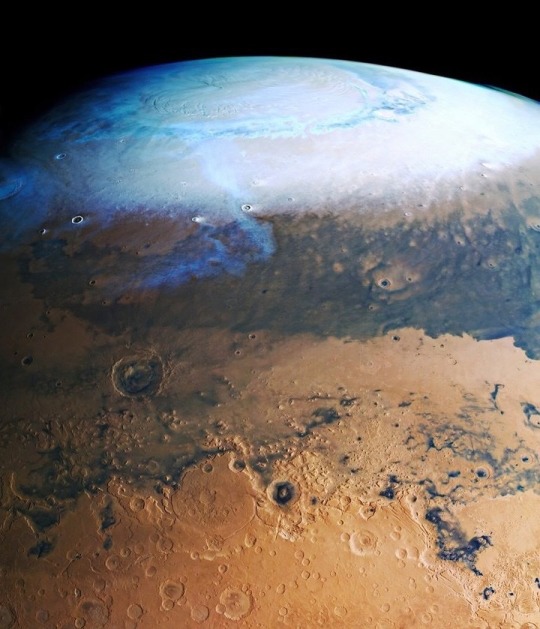
#mars posting#mars planet#water on mars#life on mars#mars#planet mars#astronomy#nasa#astronomers#universe#nasa photos#astrophotography#outer space#astrophysics#nasawebb#hubble space telescope#our universe#the universe#space exploration#space#science#space travel#space science#international space station#astronomy photography#i love astronomy#astronomy facts#astronomy picture of the day#planetary nebula#solar system
2K notes
·
View notes
Text


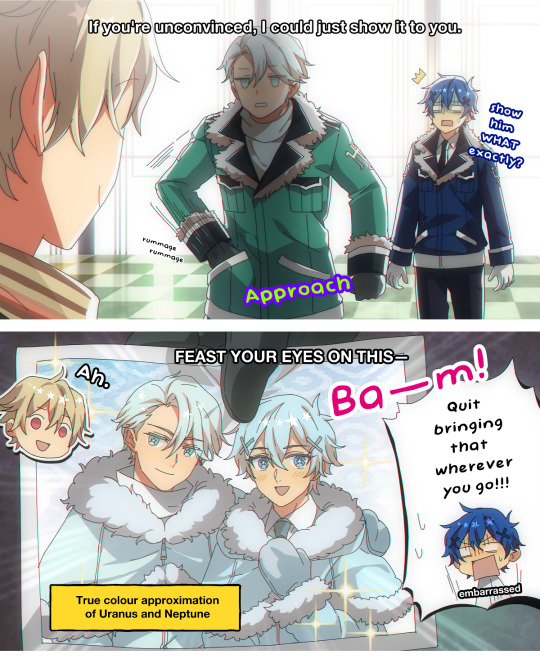
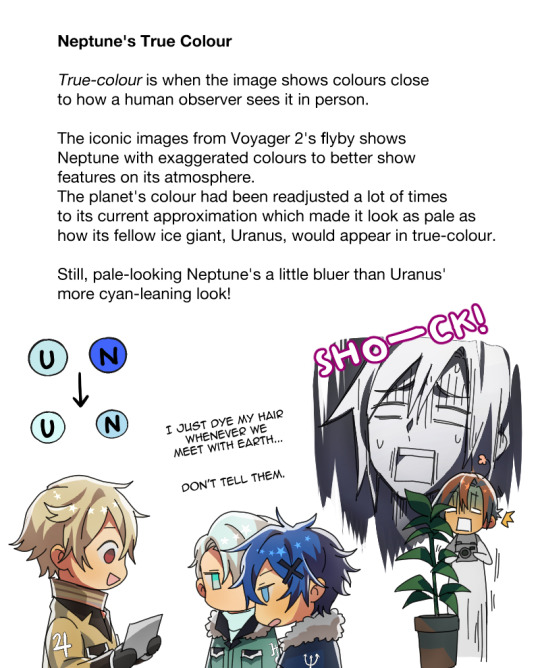
Some comic strip based off the readjusted true-colour approx. of Uranus and Neptune by Professor Patrick Irwin and his team
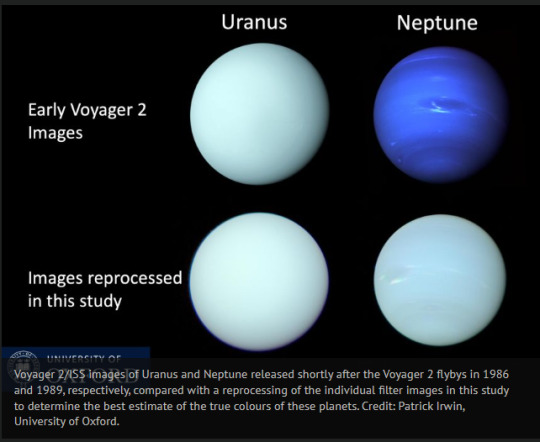
#planetary moe#solar system and friends#pm drawings#cioccolatodorima#pm earth#gijinka#solar system gijinka#pm uranus#pm neptune#pm jupiter#comic strip
1K notes
·
View notes
Text
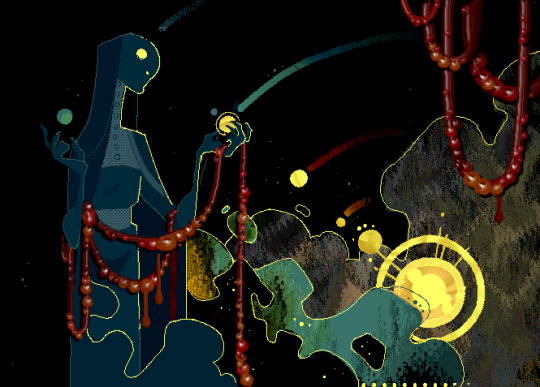
Kidpix commission for @facelessoldgargoyle! (character belongs to me)
#been a hot sec since i posted any OC art so i'm letting this skip ahead of the rest of this batch#had a lot of fun messing around with layering in this one!#commissions#art#digital art#kid pix deluxe 4#my OCs#planetary system depicted should not be taken as canon to this setting yet I'm still planning it#the plot doesn't involve space travel or anything but the in-universe astronomy is important to the cultures of the setting#so I still want it to be decently realistic wrt what phenomena can occur and how often#therefore it is very much subject to change! if you know any good resources for planning or visualizing that kind of stuff hmu
514 notes
·
View notes
Text
How our solar system moves through space.
196 notes
·
View notes
Text

Star Wars: Episode II - Attack of the Clones (2002, George Lucas)
08/02/2025
#Star Wars: Episode II - Attack of the Clones#film#2002#george lucas#Jonathan Hales#star wars#ewan mcgregor#hayden christensen#natalie portman#ian mcdiarmid#samuel l. jackson#christopher lee#anthony daniels#kenny baker#frank oz#Star Wars: Episode I - The Phantom Menace#Planetary system#Separatism#galactic republic#jedi#count dooku#civil war#obi wan kenobi#padmé amidala#Clone trooper#darth vader#clone wars#Disney Studios Australia#digital cinematography#sequel
10 notes
·
View notes
Text

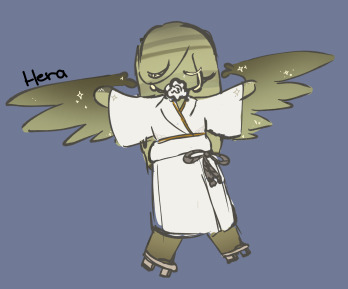



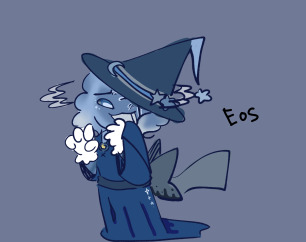
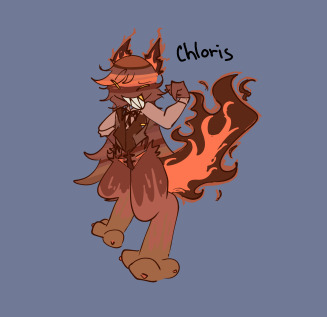
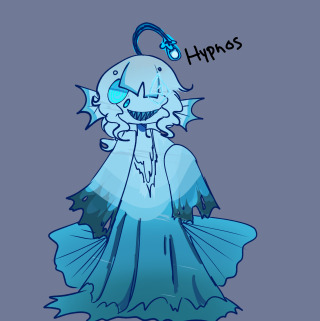
first batch (art by my friend eclipse)
23 notes
·
View notes
Text

"howlin' and a-hootin' as the meteors are shootin'
through the clear night sweet
my love, for you I swallow-
I need-
stop the sun from ever brightening
shatter shatter shatter shatter
called Dark Matter
scatter scatter scatter scatter
called Beta, Gamma, Delta
Beta, Gamma, Delta"
-Mad Owl Love Song by HOWL and Robert Macfarlane (beautiful song, really!)
Embrace/Storm (interpreted freely) for SkyStar week 2024
#theyre watching a meteor shower being shot down by the planetary defense system#skystar week 2024#skyfire#starscream#skystar#transformers fanart#cybertron#maccadam#my art#tf
299 notes
·
View notes
Text
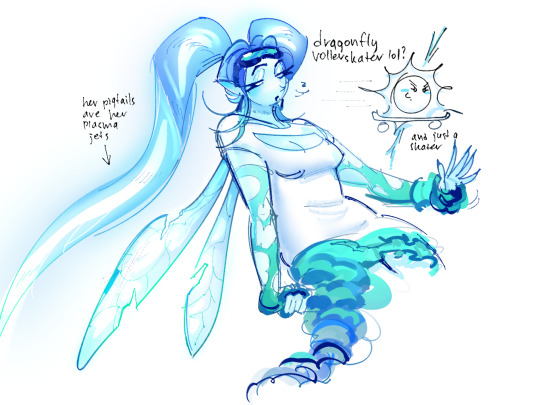


i found some sketches of a pulsar oc from a few months ago and i really liked the idea of pigtails being her jets so i decided she has a right to live. the sketches in question:



#solarballs#solarballs oc#i didn't exactly achieve what i wanted with her design BUT i think she's cute#she's a bit weird and uhinged and didn't like her planetary system too much so she's just vibing as a pulsar#rafora's art
38 notes
·
View notes